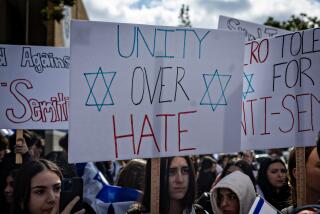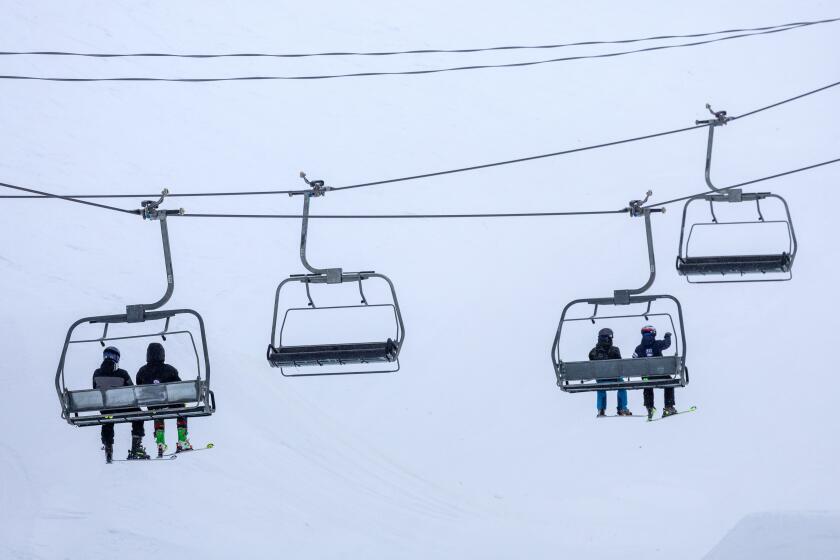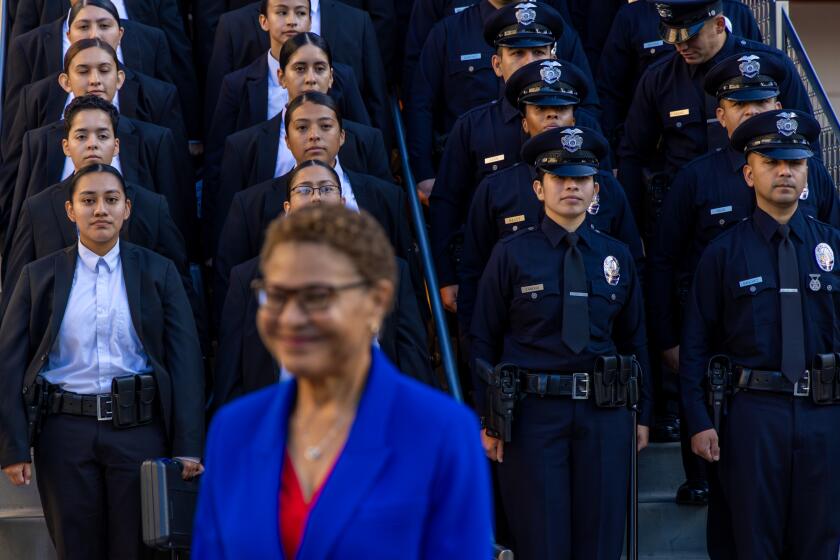Effects of Poverty, Racism on Gay Latinos Studied
- Share via
Gay Latino men living in poverty and subjected to racism and homophobia are more likely to engage in high-risk sexual behavior and have higher rates of HIV, according to a survey of men in Los Angeles, Miami and New York released Thursday.
The National Gay and Lesbian Task Force study found that 73% of gay Latino men who engaged in high-risk behavior had been targets of racial and anti-homosexual slurs. Sixty-two percent of those whose behavior was considered low-risk had been subjected to such treatment.
Thirty-one percent of those most at risk had been physically abused, compared with 15% of low-risk men.
And 79% had experienced severe embarrassment and shame, compared with 68% of low-risk men.
“It shows that HIV risk is embedded in the context of social inequality and oppression that these men experience in their life,” said Rafael Diaz, a researcher for the Institute on Sexuality, Inequality and Health at San Francisco State, who was a co-author of the study. “Poor people, oppressed people or people of color tend to be more [at risk].”
In Los Angeles County, Latino men have the highest rate of HIV infection. Nearly 40% of the cases reported in 2000 were among Latino men, compared with 14% in 1985, according to the Los Angeles County HIV Epidemiology Program.
Gunther Freehill of the Office of AIDS Programs and Policies for Los Angeles County said the findings are crucial to understanding the barriers that gay men experience when it comes to HIV prevention and treatment.
“The study is certainly consistent with our anecdotal understanding of what drives the AIDS epidemic locally,” he said. “It is important that, with this report, we understand that racism, homophobia and poverty are threats to public health.”
Researchers surveyed 912 men between October 1998 and March 1999. All were interviewed at bars, nightclubs or social events with a high gay Latino attendance.
The men were split into two categories. The first was men who admitted high-risk behavior, such as having unprotected sex within the last two months or with their last two partners and were not in monogamous relationships.
The second category was men whose descriptions of their sexual behavior was deemed low-risk and who were were considered less likely to contract HIV. Those men said they were in monogamous relationships and engaged only in protected sex.
Findings include:
* More men in the high-risk group had been the targets of homophobia. Sixty-seven percent reported being subjected to verbal assault due to their sexuality, compared with 45% in the low-risk group. Sixteen percent in the high-risk group reported being physically assaulted, compared with 7% in the low-risk category. And 34% reported being harassed by police, compared with 17% in the low-risk group.
* Men in the high-risk group reported more experiences with racism. Forty-nine percent had been subjected to rudeness and other mistreatment attributable to race, ethnicity or skin color, compared with 32% in the low-risk group. And 34% reported experiencing race-based police harassment, compared to 19% in the low-risk group.
* More men in the high-risk group had struggled financially. Fifty-four percent had run out of money for basic necessities more than twice in a year, compared with 39% in the low-risk group. And 29% had to look for work more than twice in a year, compared with 19% in the low-risk group.
Men who had positive gay role models and people to talk to about being gay were also less likely to contract HIV, Diaz said.
“These men saw that if you are gay, you can be a successful and productive member of society,” he said. “Having exposure to that made them less at-risk, and at least having one person in your family that you were able to talk openly about your homosexuality helped.”
More to Read
Sign up for Essential California
The most important California stories and recommendations in your inbox every morning.
You may occasionally receive promotional content from the Los Angeles Times.










